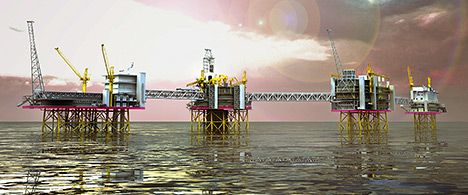 The gigantic Johan Sverdrup field, one of the most profitable industrial projects in Norway over coming decades, will provide enormous value.
The gigantic Johan Sverdrup field, one of the most profitable industrial projects in Norway over coming decades, will provide enormous value.
Construction of the first phase may lead to 51,000 man-years related to Norwegian deliveries, and the field may produce revenues amounting to NOK 1350 billion. The project will provide new knowledge, new solutions and new opportunities.
"Johan Sverdrup represents all we stand for as an industry and our faith in the future. This will be a gigantic project that will secure energy supply and jobs and result in substantial spin-offs and value for Norwegian society, the industry and the partnership behind the development," says Nylund.
Johan Sverdrup is one of the biggest discoveries on the Norwegian continental shelf since the mid-1980s and ranks among the biggest developments in the years ahead.
The consultation period concerning the environmental impact assessment for the field and the power proposal will now commence.
Large Norwegian component
It is estimated that the first-phase development of the Johan Sverdrup field will create around 51,000 man-years nationally, of which as many as 22,000 are expected to be performed by suppliers in Norway and approx. 12,000 by their subcontractors.
Calculations show that 2,700 man-years will be created in an average year in the production phase, with 3,400 man-years expected to be created at peak field development.
Based on estimates from Agenda Kaupang it is possible for the Norwegian supplier industry to be awarded more than 50% of the assignments in the construction phase and around 90% in the operating phase.
"It is very important for the Johan Sverdrup development that the Norwegian supplier industry positions itself well for the opportunities lying ahead," says Nylund.
A new chapter
According to a provisional estimate, total production revenues over 50 years may amount to as much as NOK 1350 billion (1). Of this amount, corporation tax alone will give the Norwegian state NOK 670 billion in direct revenue. Total investments for the first development phase are NOK 100-120 billion (2), while production will be in the range of 315,000-380,000 barrels per day.
Looked at from the perspective of 50 years, Johan Sverdrup will be a long-term project that several generations will bring to maturity and operate. The 200 sq.km. large field will be developed in stages. The partners are currently working on various development scenarios for the various phases in order to ensure that the first construction phase forms the basis for an overall, integrated development.
"We are planning for a stepwise field development with various installations tied back to a joint field center. This will ensure continuity and comprehensive resource utilization and also generate the greatest possible added value for our owners," adds Nylund.
Depending on the future choice of capacities and technical solutions, an early estimate for full development indicates NOK 170-220 billion with daily production put at 550,000-650,000 barrels per day.
Johan Sverdrup is situated in mature acreage that has been thoroughly studied and where the most central environmental aspects are that the development receives its power from land; that produced water will be purified and re-injected into the reservoir; and that cuttings drilled with oil-based liquid will either be brought ashore, or purified and discharged offshore. This is in accordance with regulations and a permit will be applied for.
The environmental impact assessment forms part of the plan for development and operation that is expected to be handled by the Storting next year and expected to be prepared and agreed by the partners in the beginning of February 2015.
1) 2014
2) 2013
Environmental impact assessment
An important milestone for the first planning phase of the comprehensive field development has been reached: The environmental impact assessments of: the field; the power solution; and the export solutions, are ready for consultation.
This is the first part of the plan for development and operation (PDO), the plan for installation and operation (PIO) of the power transmission facilities and the plan for installation and operation (PIO) for the export solutions respectively.
They will be submitted to the Ministry of Petroleum and Energy (MPE) in the beginning of 2015 to be discussed by the Norwegian parliament (the Storting). An investment decision will also be made at that time.
Partners
Production license 501: Lundin Norway (operator - 40%), Statoil (40%), Maersk Oil (20%)
Production license 265: Statoil (operator - 40%), Petoro (30%), Det norske oljeselskap (20%), Lundin Norway (10%)
Production license 502: Statoil (operator - 44,44%), Petoro (33,33%), Det norske oljeselskap (22,22%)


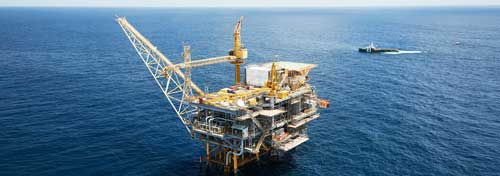 BG Group
BG Group 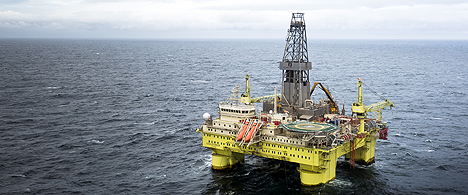 COSL Pioneer. (Photo: Ole Jørgen Bratland/Statoil)
COSL Pioneer. (Photo: Ole Jørgen Bratland/Statoil)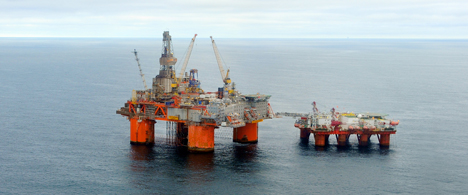 The Snorre partnership has decided to adjust the schedule for the ongoing Snorre 2040 project by postponing the planned date for DG2 from March 2015 to October 2015.
The Snorre partnership has decided to adjust the schedule for the ongoing Snorre 2040 project by postponing the planned date for DG2 from March 2015 to October 2015.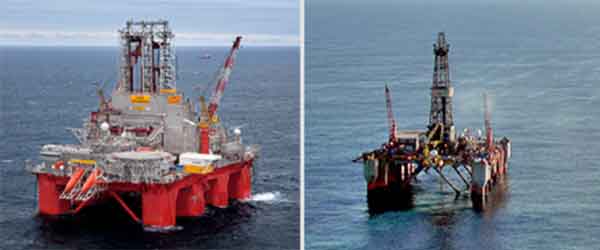 The Transocean Spitsbergen (t.v.) and Songa Trym drilling rigs will be suspended through 2014.
The Transocean Spitsbergen (t.v.) and Songa Trym drilling rigs will be suspended through 2014.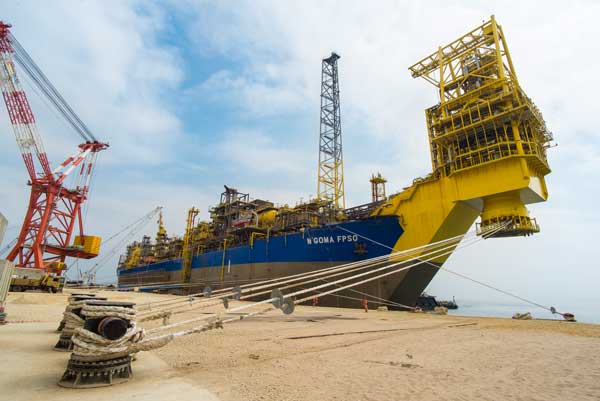 N'Goma FPSO Credit: SBM Offshore
N'Goma FPSO Credit: SBM Offshore U.S. proved reserves of oil increase for the fifth year in a row in 2013; U.S. natural gas proved reserves increase 10% and are now at an all-time high
U.S. proved reserves of oil increase for the fifth year in a row in 2013; U.S. natural gas proved reserves increase 10% and are now at an all-time high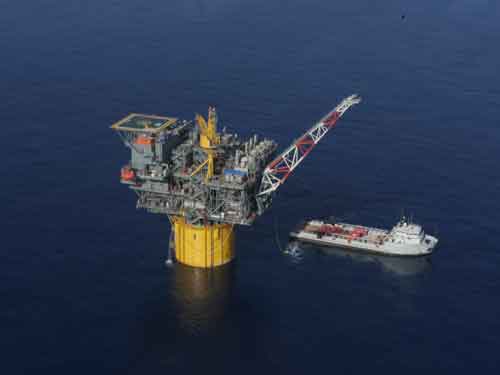 Image courtesy: Hess
Image courtesy: Hess The gigantic
The gigantic 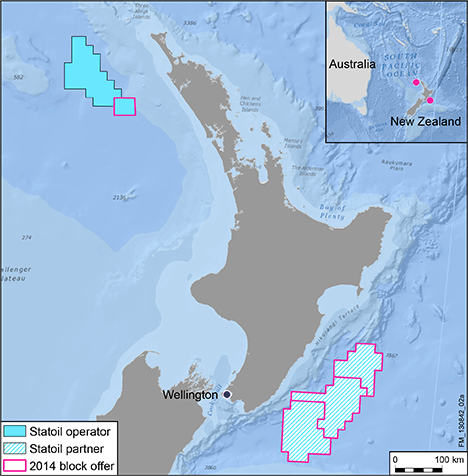 Statoil
Statoil CEO Eldar Sætre (right) and Mishal Husain at the Statoil Autumn Conference 2014. (Photo: Ole Jørgen Bratland)
CEO Eldar Sætre (right) and Mishal Husain at the Statoil Autumn Conference 2014. (Photo: Ole Jørgen Bratland)
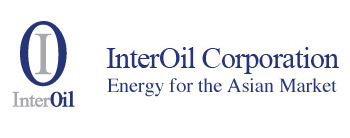
 Two new studies released by the
Two new studies released by the  In response to a federal court order, the Bureau of Ocean Energy Management (BOEM) has released the Draft Supplemental Environmental Impact Statement (SEIS) for Chukchi Sea Outer Continental Shelf Oil and Gas Lease Sale 193. BOEM prepared the draft SEIS using the best available science, and working in close consultation with Alaska Native tribes, federal partner agencies, state and local governments, stakeholders and the public. "After a robust and thorough process, BOEM has prepared a Draft Supplemental EIS that addresses the issues identified by the court regarding the Chukchi Sea Lease Sale 193,"said BOEM Acting Director Walter Cruickshank. "In the analysis released today, BOEM used a new exploration and development scenario to evaluate the potential environmental effects of oil and gas activities associated with Lease Sale 193. We look forward to receiving additional public input as we continue to take a balanced approach to the safe and responsible energy development in the region."
In response to a federal court order, the Bureau of Ocean Energy Management (BOEM) has released the Draft Supplemental Environmental Impact Statement (SEIS) for Chukchi Sea Outer Continental Shelf Oil and Gas Lease Sale 193. BOEM prepared the draft SEIS using the best available science, and working in close consultation with Alaska Native tribes, federal partner agencies, state and local governments, stakeholders and the public. "After a robust and thorough process, BOEM has prepared a Draft Supplemental EIS that addresses the issues identified by the court regarding the Chukchi Sea Lease Sale 193,"said BOEM Acting Director Walter Cruickshank. "In the analysis released today, BOEM used a new exploration and development scenario to evaluate the potential environmental effects of oil and gas activities associated with Lease Sale 193. We look forward to receiving additional public input as we continue to take a balanced approach to the safe and responsible energy development in the region."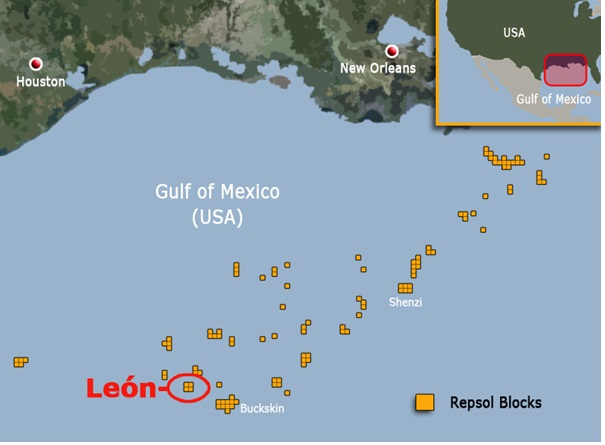 • A high quality oil net pay of over 150 meters thick has been discovered.
• A high quality oil net pay of over 150 meters thick has been discovered.